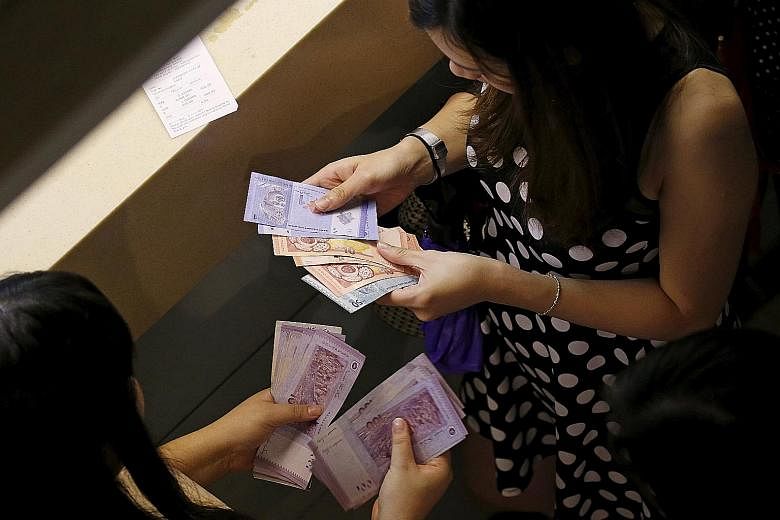KUALA LUMPUR • Malaysia's international reserves, which have slid this year as the central bank has supported the embattled currency, increased in the last two weeks of August, surprising economists.
Currency reserves increased to US$94.7 billion (S$134 billion) as of Aug 28, Bank Negara Malaysia said yesterday, from US$94.5 billion on Aug 14 - the lowest level since 2009.
Bank Negara said in a statement that reserves are sufficient to finance 7.4 months of retained imports. Some economists and analysts have been worried about the pace at which Malaysian reserves - totalling US$132 billion at the end of August 2014 - have fallen this year.
There was a slight rise in mid- June, but a sharp drop in July and August, as the ringgit plummeted.
"Today's number will probably help in alleviating some concerns, but we still have to wait and see," said Mr Rahul Bajoria, an economist at Barclays in Singapore.
"There are risks around the (mid-September) Federal Reserve policy meeting, which may see a more volatile period ahead," he said. "But broadly speaking, we are relatively comfortable with Malaysia's external position."
-
Aussie dollar slips further
SYDNEY • Australia's dollar slid to a more than 6.5-year low against the Singdollar yesterday, as investors sought safe havens over fears that data from the US Labour Department's job report could encourage the Federal Reserve to raise interest rates for the first time since 2006.
The Aussie dollar traded at 0.9909 to one Singdollar, slipping further after closing at 1.0075 on Thursday.
Concerns over a possible China hard landing had investors selling the Aussie dollar aggressively in recent weeks, seeking safety in the US greenback.
The US dollar, meanwhile was trading at 1.4187 to one Singdollar, touching a five-year high.
"If they do hike in September, we will see more market volatility and more uncertainty as a result of that," Mr Mitul Kotecha, head of Asia-Pacific currency strategy at Barclays in Singapore, told Bloomberg.
Mr Suhaimi Ilias, an economist at Maybank, said he was surprised by the increase, which "suggests there is a bit of stabilisation" after sustained pressure in July and the first half of August.
He suggested that funds could have been repatriated by government-linked companies and state-linked investments to offset outflows from foreign investment portfolios.
Currency traders suggested the increase might reflect that Bank Negara did not need to spend as much as before to support the ringgit as liquidity was thin.
The ringgit has seen losses of around 18 per cent this year, making it emerging Asia's worst performing currency.
This week, it strengthened to a one-week high of 4.1380 after reaching 4.2950 per US dollar on Aug 26, its weakest since July 1998.
Yesterday, the ringgit was at 4.2560 to the US dollar at 5pm Singapore time, weaker than at the opening though losses were pared after Malaysia announced stronger-than-expected July exports.
Malaysia, a gas exporter, has seen a deteriorating trade balance from soft commodity prices, which contributed to the ringgit's decline.
It also faces a political crisis, with Prime Minister Najib Razak's leadership in question after alleged graft, which he denies. Tens of thousands of Malaysians rallied in Kuala Lumpur last weekend, calling for his resignation.
Both Datuk Seri Najib and Malaysia's central bank governor have pledged not to impose capital controls. Mr Najib said on Thursday that Malaysia's economy was in a stronger position now than during the 1997-98 Asian financial crisis. During that crisis, Malaysia pegged the ringgit at 3.8 to the US dollar, and retained that peg until 2005.
REUTERS

